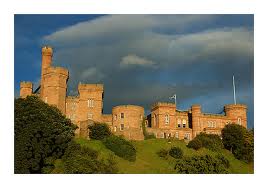WordPress database error: [Got error 28 from storage engine]
SELECT t.*, tt.*, tr.object_id FROM wp_terms AS t INNER JOIN wp_term_taxonomy AS tt ON tt.term_id = t.term_id INNER JOIN wp_term_relationships AS tr ON tr.term_taxonomy_id = tt.term_taxonomy_id WHERE tt.taxonomy IN ('category', 'post_tag', 'post_format') AND tr.object_id IN (19718) ORDER BY t.name ASC
Clan Baillie History
The surname Baillie most probably derives from the French term for bailif which was a name given to an officer who managed estates. It is a common misconception that the name derives from the surname Bailliol but was changed after the wars of independence due to it’s connection with the unpopular Balliol kings.
Baillies are first recorded in 1311 when William de Baillie appears as a jury member at an inquest concerning forfeited lands. In 1357 Willaim Baillie of Hoprig was knighted by David II and was later given a royal charter to the barony of Lamington. This was the beginning of a long Baillie dynasty which spread to Baillies of Carphin, Park, Jerviston, Dunrogal, Carnbroe, Castlecarry, Provand and Dochfour.
Alexander Baillie was constable of Inverness Castle. Cuthbert Bailllie of Carphin was made Lord High Treasurer to James IV in 1512. Another prominent Baillie; Sir William Ballie of Provand was made ‘Lord Provand’ and became Lord President of the Court of Session between 1565 and 1595.
Like many other Scottish families their fortunes were decided by which side they took during the time of Mary, Queen of Scots and Sir William Baillies presence at the Battle of Langside resulted in his estates being forfeited. His grandson also suffered defeat at the hands of the Marquis of Montrose. These Baillies were staunch and frequently outspoken Protestants. Robert Baillie of Jerviswood was unfortunately implicated in an attempt to oppose the succession of James VII and was hanged in 1684 and his family fled to Holland. After James VII was overthrown in 1688 the family estates were restored.
This branch of the family married into the earldom of Haddington whilst the Dochfour Baillies, also through marriage gained large estates by Loch Ness.
Clan Baillie Posts







